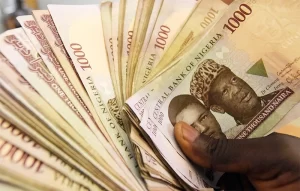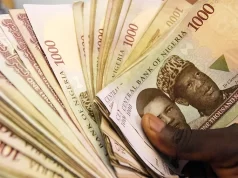On January 9th, 2024, the Nigerian Naira experienced a significant decline, closing at N1,089.51 per dollar in the official market, marking a notable depreciation of 27.19% compared to the previous closing.


This marks the fourth time the Naira has breached the N1,000/$ threshold, indicating a persistent trend of weakness. Previous instances occurred on December 8th, 2023, December 28th, 2023, and January 3rd, 2024.

Join our Telegram Channel for Updates
Despite interventions by the Central Bank of Nigeria (CBN) to strengthen the foreign exchange market, the currency’s downward trend persists, raising concerns about its potential impact on the broader economy.
CHECK: World Bank: Nigeria’s Per Capita Income to Recover by 2025
The depreciation is expected to exacerbate existing inflationary pressures and strain household budgets, especially for those reliant on imported goods. Businesses, both large and small, may face challenges in maintaining profitability due to potential increases in production costs.
On this day, the Naira depreciated by 27.19%, closing at N1,089.51 to a dollar. The intraday high recorded was N1,251/$1, while the intraday low was N720/$1.
Forex turnover at the close of trading was $97.45 million, representing a 63.34% increase compared to the previous day. In the parallel forex market, the Naira closed flat at N1,245/$1.
The Manufacturers Association of Nigeria (MAN) predicts that the forex crisis and high inflation will limit the manufacturing sector’s performance until mid-2024.
Average capacity utilization is expected to hover around 50%, with a potential uptick anticipated in the third quarter as challenges subside.
MAN calls for government intervention, including an overhaul of the power sector, prioritization of forex and credit allocation to manufacturers, and incentivizing investment in renewables for electricity generation and energy-cost efficiency. MAN also recommends streamlining the number of Bureau De Change operators for effective management and supervision.













